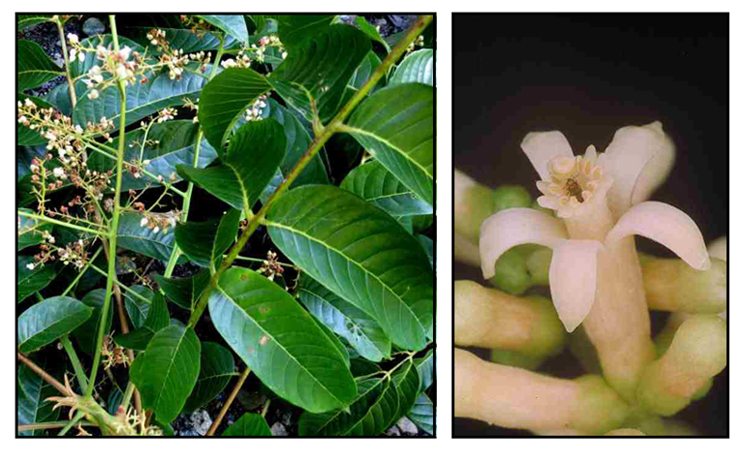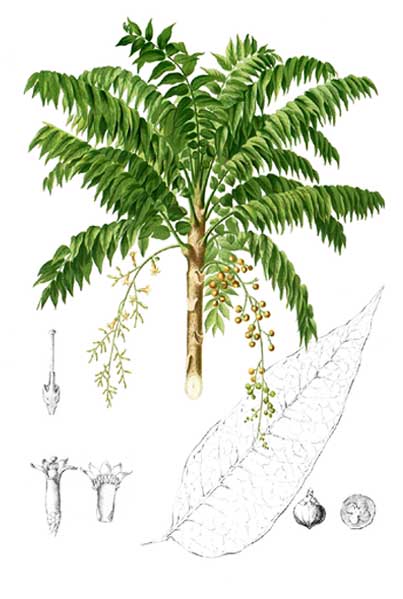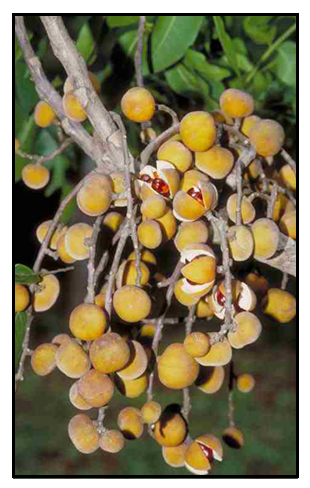
Family • Meliaceae
Igiu
Dysoxylum decandrum (Blanco) Merr.
IVORY MAHOGANY
| Scientific names | Common names |
| Dysoxylum decandrum (Blanco) Merr. | Agaru (Pamp.) |
| Dysoxylum amooroides Miq. | Aguiu (Pamp.) |
| Dysoxylum blancoi Vidal | Ananangtang (Bik.) |
| Dysoxylum gaudichaudianum (A. Juss.) Miq. | Bakugan (Bik.) |
| Dysoxylum salutare F.-Vill. | Basiloag (Ilk.) |
| Turraea decandra Blanco | Bolong-tambag (Bik.) |
| Turraea virens Blanco | Bongliu (Bik.) |
| Bundugon (Bik.) | |
| Buntog (Bik.) | |
| Buntogan (Bik.) | |
| Himamao (Tag.) | |
| Igiu (Tag., Pamp.) | |
| Ikuo (Tag.) | |
| Kugiug (Tag.) | |
| Makasisi (Bik.) | |
| Malaaduas (P. Bis.) | |
| Malabaga (Pamp.) | |
| Malabangau (Tag.) | |
| Manangtang (Bik.) | |
| Palo-hambobokag (Bik.) | |
| Paluahan (P. Bis.) | |
| Pamatagin (Ibn.) | |
| Pasiloag (Ilk.) | |
| Tadiang-kalabau (Tag.) | |
| Tauing-tauing (Mbo.) | |
| Taliktan (Tag., Pamp.) | |
| Ivory mahogany (Engl.) | |
| Dysoxylum decandrum (Blanco) Merr. is a synonym of Dysoxylum gaudichaudianum (A.Juss.) Miq. The Plant List | |
| Other vernacular names |
| FRENCH: Dysoxylon de Gaudichaud. |
Constituents Properties Availability |
Last Updated January 2015
![]()
 |
| IMAGE SOURCE/ Photograph / Close-up of a flower / Photograph by: Jago, B. / Non-Commercial Use / Australian National Botanic Gardens |
| OTHER IMAGE SOURCE/ Fruits / Photographer: Unknown / Non-Commercial Use / Australian National Botanic Gardens |
| OTHER IMAGE SOURCE/ Leaves / Photographer: Tjut Jul Fatisa Bangun / Creative Commons Attribution-NonCommercial-NoDerivs 3.0 Unported (CC BY-NC-ND 3.0)-Commercial Use / Australian National Botanic Gardens |
| OTHER IMAGE SOURCE/ File:Dysoxylum blancoi Blanco1.130.png / Dysoxylum gaudichaudianum. Plate from book / Flora de Filipinas / 1880 - 1883 / Francisco Manuel Blanco (O.S.A) / Public Domain / Wikimedia Commons |
Additional
Sources and Suggested Readings |
| It is not uncommon for links on studies/sources to change. Copying and pasting the information on the search window or using the DOI (if available) will often redirect to the new link page. |
• |
 |

 Botany
Botany Distribution
Distribution Studies
Studies 